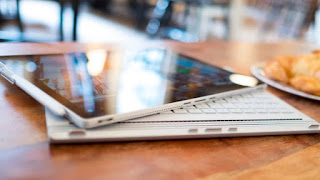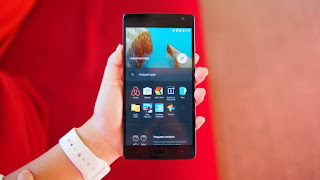An amazing laptop that does even more as a tablet
Update: Standing by for the Surface Book successor before capering onto theMicrosoft 2-in-1 bandwagon? You may be waiting around longer than expected. Read on into the "Recent developments" section to find out more.
In its short tenure as a hardware maker, Microsoft has become the defacto trailblazer for Windows-running devices. It all started with the lofty promise that its Surface tablet could replace your laptop. We were skeptical about it three years ago, but after the Surface Pro 3, Microsoft nearly perfected the formula and showed veteran computer manufacturers how hybrids should be made.
Now, Microsoft introduces the Surface Book as the "ultimate laptop." Like the Surface tablets before it, this laptop takes a unique spin on the notebook format that's been around for over 40 years. Between the 3:2 aspect ratio, 13.5-inch screen and its practically-trademarked "dynamic fulcrum" hinge, there isn't any machine on the planet like the Surface Book – and then, with the touch of a button and a gentle tug, it becomes a tablet.
It all sounds like an amazing idea on paper, and with the added "holy shit, Microsoft made a laptop" factor, the Surface Book sounds like a thoroughly amazing device. Let's see just how well Redmond made good on the hype.
Recent developments
After being deemed notorious for bugs by the press, Microsoft has finally resolved the mishmash of issues plaguing the Surface Book last year, bringing it that much closer to perfection.
Released back in February, Microsoft's first attempt at rectifying the Surface Book arrived in the form of a power management update addressing compatibility issues with Intel's Skylake processors. Because Microsoft and its OEMs were still adjusting to the new silicon, these types of issues persisted in a wide range of devices.
It wasn't until April that the infamous driver issues were ironed out. Some of which prevented users from waking up their Surface Books from sleep mode, while others froze up cameras to prevent Windows Hello logins. Over a dozen new drivers were released on April 19, finally putting to rest most (but not all) of the concerns over narcoleptic laptops and bricked webcams.
By mid-May, Microsoft delivered another firmware update full of even more driver amendments for components, like the built-in Microsoft Camera and the Surface Book's Intel processors. This addressed most of the major complaints surrounding the Surface Book, save for the irreparable hardware concerns. Those will come later, presumably next Spring when the Surface Book 2 is rumored to launch alongside a major Windows 10 overhaul.
Design
If a tear in the space-time continuum were to suddenly rip open, two things would fall out: the Terminator and then the Surface Book quickly tumbling to the Earth behind it. From the snake-like hinge, the flat design and even down to the washed-out silver color of this laptop, everything about it just seems like it came from the future.
Milled from two solid blocks of magnesium, the Surface Book feels sturdy and has a most minimalistic style unto its own.
From keyboard deck to the palm rests, the entire interior of this laptop is one flat surface of metal, save for the large space reserved for the glass touchpad. Similarly, the screen lid is made of one uninterrupted slate of magnesium, with its only extra flourishes being a mirror-finished Windows logo in the center and a rear-facing camera.
Along the chiseled sides, you'll find two flat edges that start from the top of the display and terminate at the tip of the palm rest. That's not the only seamless transition.
Unlike most other convertible devices, the screen and base sections share nearly the same thickness and weight. Without the foreknowledge that the display can actually detach, the Surface Book looks like one continuous device, thanks to the hinge.
Mind the gap
At the midpoint of the Surface Book, there's a piece of connective tissue that Microsoft calls the dynamic fulcrum hinge. On top of simply gluing the screen and keyboard base together, it's this key piece that makes the whole device work.
Rather than folding flatly, the hinge basically coils into itself, leaving a noticeable gap between the screen and keyboard when the unit is closed. When opened, this same part rolls out and actually extends the base of the laptop, which in turn helps extend the support base for the tablet portion of the Surface Book (called the Clipboard).
While a traditional notebook display might weigh half a pound at most, the top section of the Surface Book weighs 1.6-pounds, because it contains all the necessary parts to act as a standalone tablet. As such, the hinge has been reinforced and contains extra mechanisms, not unlike the Lenovo Yoga 900's watchband-style hinge to keep it in place.
Surface Book is solid as a rock, and you can even pick up it by the display and shake it about without worrying about the whole thing falling apart. On a flat surface, the screen is held steady in place and even stays put when you have it in your lap.
The only times the screen wobbles are when I'm poking at it with my finger or the Surface pen, but that really comes with trying to operate a touchscreen on any laptop.
And to address the concerns of the gap left in the middle of the system. Yes, there is a substantial open space in the middle of the system when it's closed. No, dust and other bits of nasty will not slip into the interior anymore than with a standard laptop, unless you're a particularly messy person. After a week of using the Surface Book religiously, I can run my finger against the inside edge of the hinge and not find a single speck of dust.
Another plus side of having a laptop that doesn't close completely flush is you'll never find any oily outlines of the keyboard imprinted on the screen. It's a design element that also eliminates the need to seat the keyboard into a recessed area. Instead, the keys on this laptop sit flush with the keyboard deck.
The keyboard itself offers a splendid 1.6mm of key travel that caps off with a satisfying thwack when you bottom out the keys. The trackpad is equally as enjoyable, with it's glass laminated finish. For the first time ever, I found myself interested in using the three-finger multi-gestures to rotate through windows and reveal the desktop.
While this is a tiny element of the Surface Book, few – if any – other Windows notebooks on the market today offer such a tight tracking experience.
Mobilizing the desktop
The Surface Book's other signature trick is the screen can pop off the base with just the tap of a button. Technically, Microsoft is coming late to the 2-in-1 laptop game with various devices being able to do the same, including Acer's Switch family, Toshiba's Click notebooks, some HP devices and the list goes on.
However, no one has made a system as seamless as the Surface Book.
Undocking and attaching the Clipboard is nearly as seamless as the Surface Book's design. After either pressing the eject button on the keyboard or the virtual button in the taskbar, the screen will blink off for a second and then notify you it's safe to detach the screen with one quick tug.
It's fast and simple, however, the timing takes a little getting used to. After you get the prompt to detach the screen, you have to wait for about half a second before you can actually lift the display off its base.
Another unique feature to this notebook is it's the first to integrate a discrete graphics processor, or GPU, into a hybrid system. Tucked underneath the keyboard is a customized Nvidia GeForce GPU that makes this laptop just a bit more capable with media production and gaming.
We've seen this sort of GPU docking technology before in machines like the MSI GS30 Shadow with GamingDock and Alienware's GPU Amplifier solution. Microsoft has improved upon dockable graphics, as the Surface Book just needs a short moment to disengage the extra parts, whereas both the Alienware and MSI solutions require the laptop to reboot completely.
It's a neat feature that allows me to quickly show a friend something cool or when I want to read a digital comic book without having to lug the whole laptop around. But it didn't really click with me until I realized how easily it lets me bring my entire PC to another place without having to disconnect my external monitor, keyboard, mouse, Xbox controller and all my other peripherals at home
It's the coolest mechanic since the saucer separation of the Enterprise-D. What's more, it leaves open a door to expandability. Because the Clipboard iscompatible with all Surface Book keyboard bases, not just the one it shipped with, Microsoft could theoretically come out with future upgrades could be done through new bases. (Or maybe even a desktop rig that interfaces with the display? We can dream.)


































